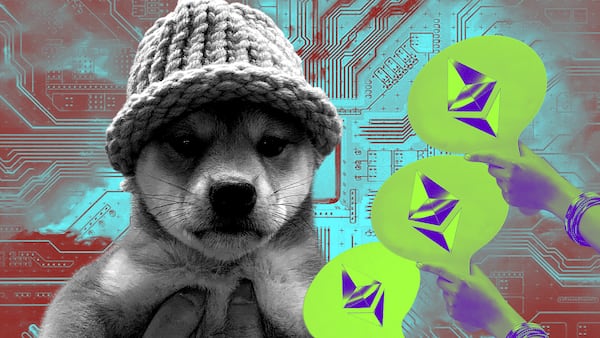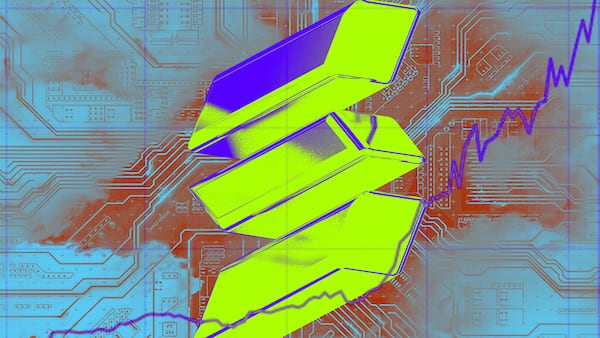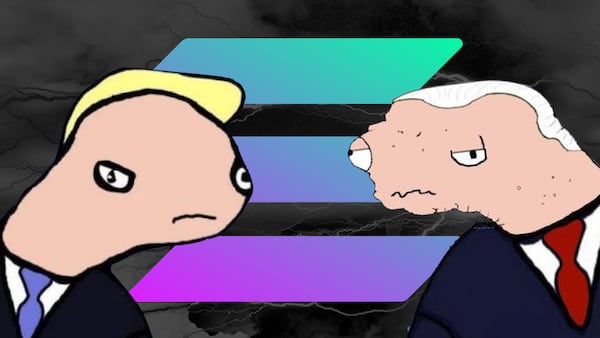- Solana’s stablecoin market is dominated by two centralised tokens, USDC and USDT.
- A pair of Solana projects are working to build crypto-backed alternatives.
- Previous attempts have failed to gain any traction.
Solana’s “DeFi 2.0″ projects are wading into the popular blockchain’s $3 billion stablecoin market, betting they can succeed where their predecessors have struggled.
Mrgn, the company behind year-old lending and liquid staking protocol marginfi, will likely launch a stablecoin with a “soft peg” to the US dollar this month.
Jupiter, a decentralised exchange aggregator that launched just before FTX collapsed in November 2022, is also working on a stablecoin, though it has yet to announce a release date.
If successful, they’ll crack a duopoly on the lucrative stablecoin market while giving Solana users a crypto-native alternative — a valued commodity among crypto purists looking for stable, “censorship-resistant” assets.
Stablecoins are among the most successful real-world applications of crypto technology, increasingly used to pay for goods and services in some parts of the world, such as Lebanon and Argentina.
That’s because they’re meant to be stable — pegged at all times to another asset, typically the US dollar. That provides a blockchain-based refuge from the volatility of most other tokens.
But crypto-backed stablecoins have bedevilled Solana projects. Despite several attempts to create one, almost 70% of the blockchain’s stablecoin market is dominated by Circle’s USDC, according to DefiLlama data.
USDC and Tether’s USDT, another “centralised” stablecoin, account for almost 99% of the stablecoin market on Solana.
Although both dominate on Ethereum, they face stiffer competition from stablecoins backed by crypto assets, such as Maker’s DAI and Ethena’s USDe. Those tokens account for a combined 7% of Ethereum’s stablecoin market.
Proponents of decentralisation sometimes champion crypto-backed stablecoins due to their limited exposure to the banking system and, in turn, hostile regulators.
Nevertheless, similar projects on Solana have found little success. The three largest, UXD, PAI, and USDH, have a combined circulating supply of just 15 million.
Marginfi head of growth Anders Jorgensen attributed USDC’s dominance to Solana’s relatively immature DeFi ecosystem, which is booming after it was levelled by the collapse of FTX in 2022.
“I think what’s important to remember is, like, Solana’s still really early,” Jorgensen told DL News. “It’s mostly just been a function of, there hasn’t been as many devs as the EVM ecosystem, and the really quality teams have just pursued other primitives so far.”
Marginfi’s stablecoin, YBX, will be backed by liquid staking derivatives, such as the company’s own LST and Jito’s JitoSOL.
Because the assets that back YBX appreciate in value over time, so too will the token, which is designed to gradually drift away from its “soft” dollar peg.
That’s part of the reason the marginfi chose to eschew stablecoin naming conventions. Of the hundreds of dollar-pegged stablecoins in circulation, almost all have “USD” in their name.
“It’s not exactly a stablecoin, right?” Jorgensen said. “Right now, it’s a dollar-denominated stake pool. So you’re just getting the yield from staking in dollar terms.”
Not everyone loves the design.
Messari analyst Kunal Goel has likened YBX to Lybra, an Ethereum-based stablecoin backed by liquid staking derivatives.
Lybra’s design “makes it a good store of value, but it may limit its adoption across DeFi as a medium of exchange,” Goel wrote last year.
But Solana’s frothy market and the limited supply of its leading stablecoin, USDC, will ensure its success, according to Jorgensen.
“In the market we’re in right now, there’s a ton of demand to get leverage, and so rates are super high,” he said. “So we’ve been quoting anywhere from 20 [percent] to high double-digits to borrow USDC on marginfi.”
Just after 4:30pm New York time Thursday, the cost to borrow USDC on marginfi, Kamino, and Solend — all Solana lending protocols — was 26%, 29%, and 20%, respectively.
Marginfi users who loan liquid staking tokens will be able to mint YBX for far less: Mrgn plans on charging an interest rate of about 2%, according to Jorgensen.
“If you can get leverage for that cheap, which is what we’re going to offer with YBX, I think there’s a very clear incentive to mint.”
Aleks Gilbert is DL News’ New York-based DeFi correspondent. You can reach him at aleks@dlnews.com.







